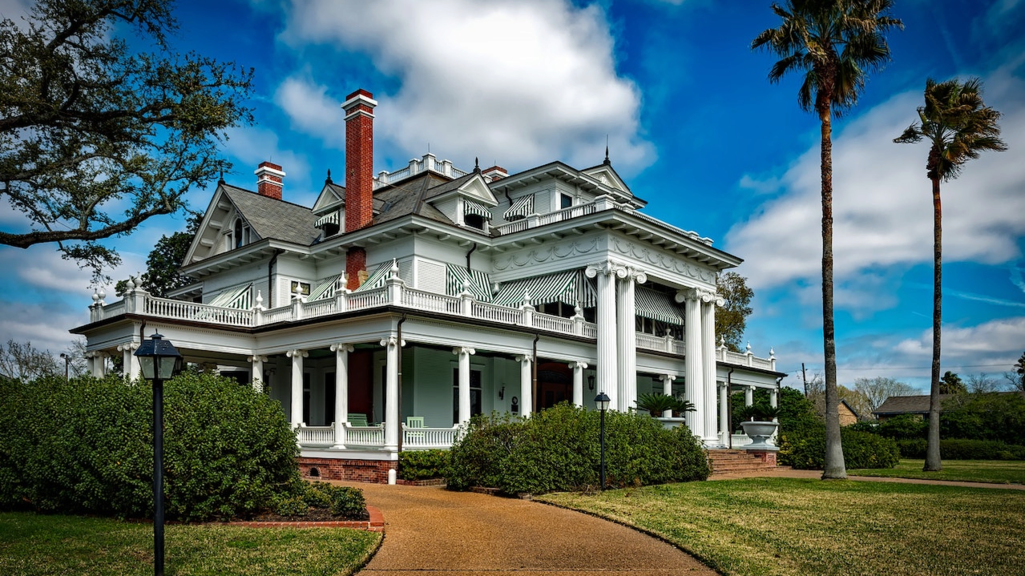
Historical Buildings
Historical Homes and Buildings with their GRID LOCATORS...
Learn more history of homes on websites indicated-
Lewis Reeve Sams House: (c. 1852)
“Prince of Tides” film site with raised, double porches, T-shape. Q7
Joseph Johnson House: (c. 1859)
“The Castle” one of “great houses of the South Carolina coast.” P7
William Fripp House: (c. 1830)
“Tidewater” built by planter “Good Billy” Fripp,
known for his generosity, and one of the area’s
wealthiest 19th century planters. P8
James Robert Verdier House: (c. 1814)
“Marshlands” built by Verdier, pioneer in the
treatment of yellow fever. O8
Edgar Fripp House: (c. 1853)
“Tidalholm” featured in “The Big Chill” and “The Great Santini.” N8
Berners Barnwell Sams House: (c.1852)
Includes Beaufort’s only remaining slave dependencies, now apartments,
Robert Smalls, was born in this house. N8
First African Baptist Church: (c.1865)
Built by the Baptist Church of Beaufort for its African American
members and in continuous use since the 1860s. N6
Beth Israel Synagogue: (c. 1908)
401 Scott Street. Built by Beaufort’s large Jewish community,
remains an active congregation. (No graphic on Map yet)
William Sidney Smith House: (c. 1897)
Originally a boarding house, renovated in 1980s.
Now The Beaufort Inn at Port Republic and West St. P6
John Mark Verdier House: (c. 1804)
Preserved after condemnation in 1942.
Flagship of Historic Beaufort Foundation.
See website. Q6
George Parsons Elliott House: (c. 1844)
Beaufort-style mansion converted to office space. P4
Tabernacle Baptist Church: (c. 1840)
Corner Charles and Craven Street.
Stained glass windows created by a parishioner.
Bust of Robert Smalls. (He is buried here.) P5
William Elliott House: (c. 1790) Corner Newcastle and Bay Street.
Named “The Anchorage” built by one of Beaufort’s
few Secession opponents; remodeled in 1910. See website. P4
William Fickling House: (c. 1820s)
Schoolmaster’s home now Rectory of Parish Church
of St. Helena. (No graphic on Map) O4
Milton Maxey House: (c. 1813)
Site of first meeting on Secession in South Carolina!
(known as “Secession House”) P4
Thomas Rhett House: (c. 1820)
Originally an in-town plantation house at
the corner of Craven and Newcastle Street.
Now the Rhett House Inn B&B. See website.
John A. Cuthbert House: (c. 1810)
1203 Bay Street at Church Street.
Antebellum home with Victorian elements
added in late 19th century. See website.
Now The Cuthbert House Inn. P4
Robert Means House: (c. 1810)
Antebellum Mansion of Historical value next to
the Cuthbert House Inn. More info to come. P4
Charles Edward Leverett House: (c. 1815; moved 1850)
Leverett, one of few who reclaimed his home after Civil War.
John Joyner Smith House (c. 1813; remodeled in 1850).
Used by the Union commander General Stevens during
Civil War. This house has a faux entrance on the south end. t
Edward Barnwell House: (c. 1815)
Built by great-grandson of Indian fighter “Tuscarora Jack” Barnwell. P3
First Presbyterian Church: (c. 1929)
1201 North Street. Temple-like façade added in 1983.
Located at Church and North Street. (No graphic yet)
Parish Church Of St. Helena: (c. 1724)
Parish established in 1712. Some of S.C.’s
earliest families are buried in the cemetery. O4
Baptist Church of Beaufort: (c. 1844)
Congregation dates to 18th century. Ceiling
ornamentation believed the work of slaves. O6
Carteret Street Methodist Church: (c. 1922)
408 Cateret St. at North St. Methodismin in Beaufort is
traced to 1737 when John Wesley visited. (No signage on map.)
St. Peter’s Roman Catholic Church: (c. 1846)
Built by Irish immigrants. N6
Santa Elena History Center:
in the former Federal District Courthouse built in 1883.
It welcomes visitors too many historic displays. O2
Historic Firehouse & City Meat Market: (c. 1911)
Present location of the Reconstruction Era
National Monument. (corner of Craven and Scott Street)
North of the library. P6
The Beaufort Arsenal (c. 1798 but rebuilt in 1852)
713 Craven Street. Housed the volunteer Artillery
through WW11. Now the Visitors Center and History Museum. P6